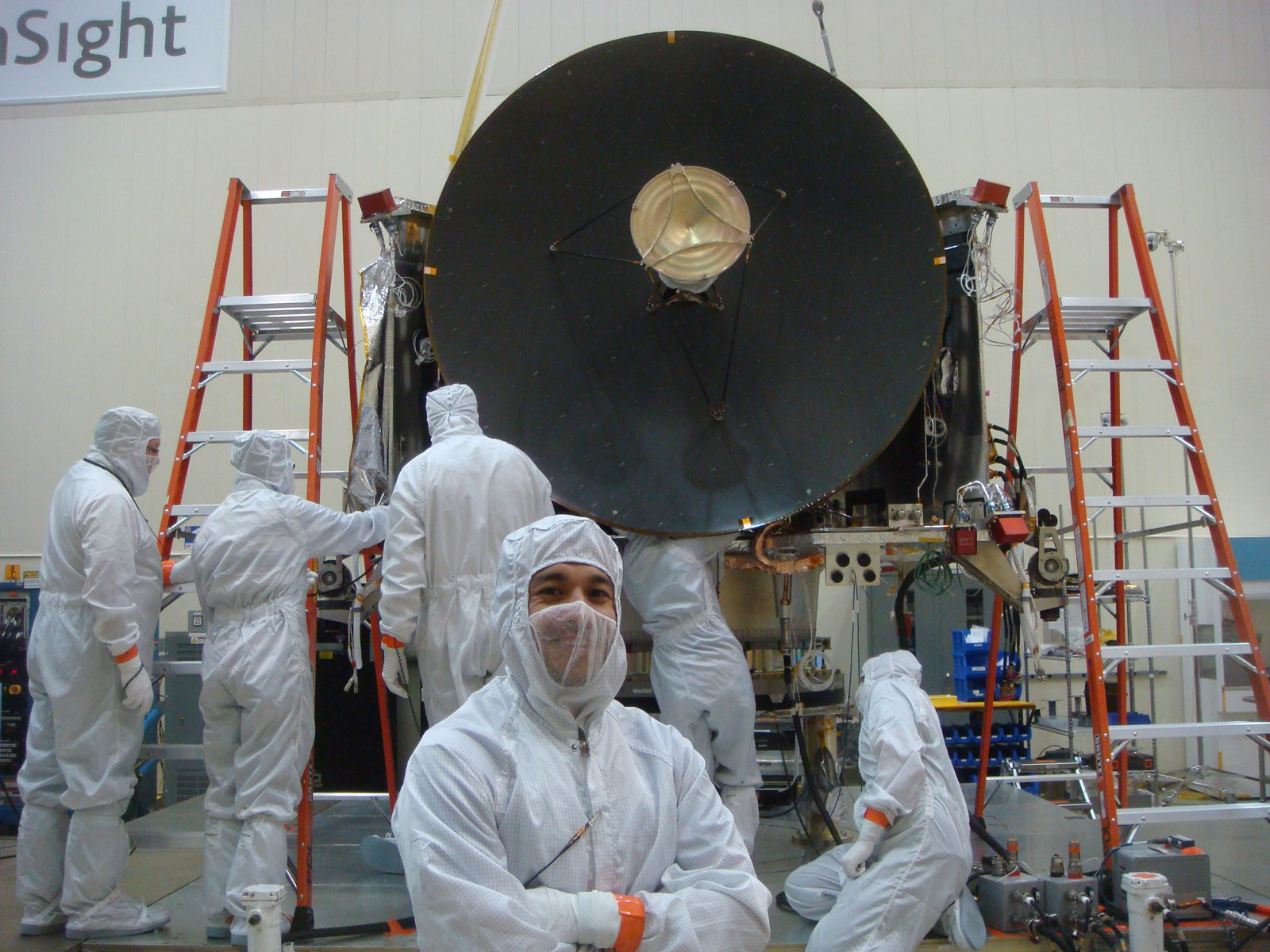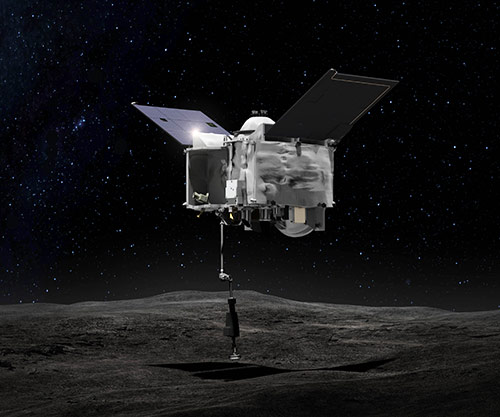
Javier Cerna
Communications System Engineer - Lockheed Martin Corporation
This short Q&A was featured in a Nov. 19, 2018 article introducing a selection of people who work on the OSIRIS-REx mission to explore asteroid Bennu.
Expertise: Electrical Engineering
Hometown: Born in Mexico City, and raised in Los Angeles, and Las Cruces, New Mexico
Along with my team, I am responsible for ensuring that the data the science community is interested in from OSIRIS-REx gets down to the ground and that instructions can be sent from Earth to the spacecraft. One thing we do is evaluate how strong the signal from the spacecraft is—kind of like checking the strength of the WiFi connection. Basically, we’re ensuring that the link from the spacecraft to the ground, and vice versa, stays strong.
One thing is making sure all the data collected from the spacecraft is downlinked so the science team can use it. There is always a balance we have to find between using limited radio signals to download science data versus using them for the navigation team, which needs data to determine the spacecraft’s trajectory and where it is in space. There are several antennas on the spacecraft. To downlink the data, we have to point the spacecraft’s giant antenna, High Gain Antenna, towards Earth. But to perform all the science observations, the spacecraft has to go to a different attitude that points the science instruments towards the asteroid. For those observations, we’re usually switching to another antenna, which has not as strong of a signal, but it’s still reliable enough to provide the navigation team with the information they need.
Well, I had a great antennas professor at New Mexico State University: Dr. Russ Jedlicka. His enthusiasm for the subject, and his way of effectively teaching complex materials to students, encouraged me to take a few of his courses on antennas and electromagnetics. When I graduated college, I interviewed with Lockheed Martin in Houston and was selected for the communications engineer role on the development of the Orion spacecraft, which is NASA’s exploration vehicle that will take humans farther than ever before.
Growing up, I did not originally consider becoming an engineer. I was good at math and science and had an interest in computers, so I took those types of courses in high school. When I filled out my application for college, I was required to put down an area of interest; I chose chemistry and computer engineering, because they aligned with my strengths. Eventually, that led me to pursue a degree in electrical engineering and I realized that I really enjoyed it.
OSIRIS-REx is NASA's first asteroid sample return mission. It is exploring a near-Earth asteroid called Bennu (formerly 1999 RQ36), and bring a sample of that small world back to Earth for study.
Planetary science is a global profession.


